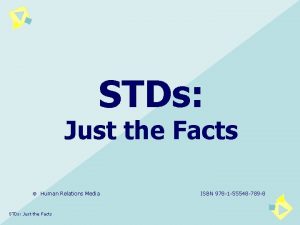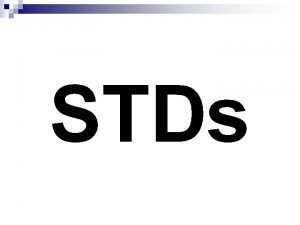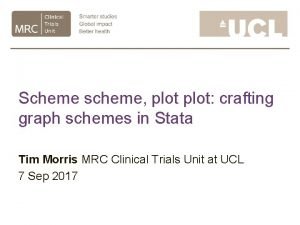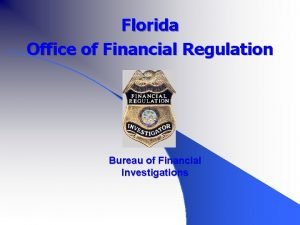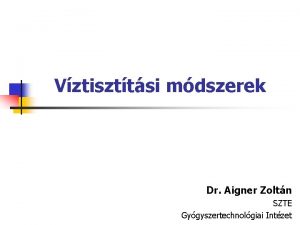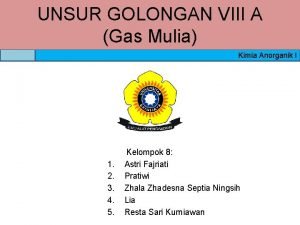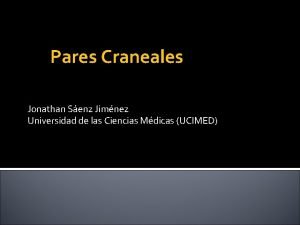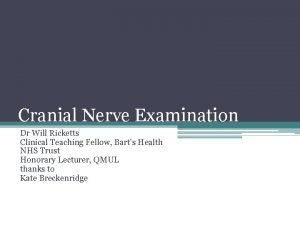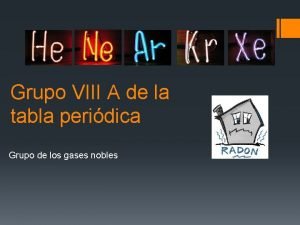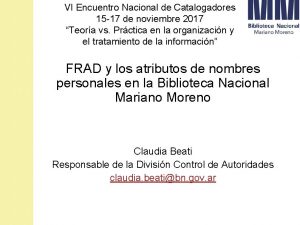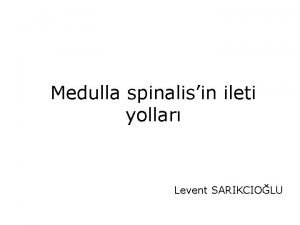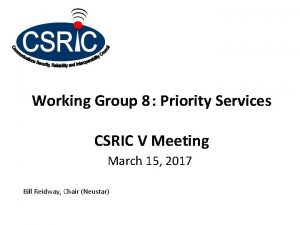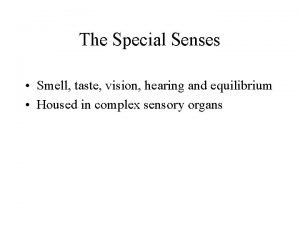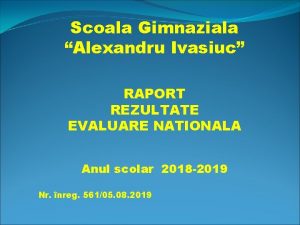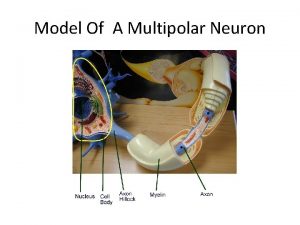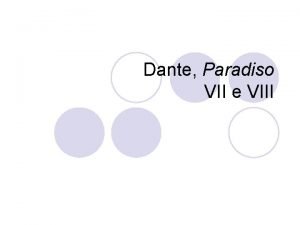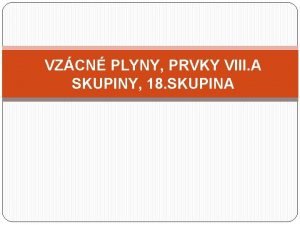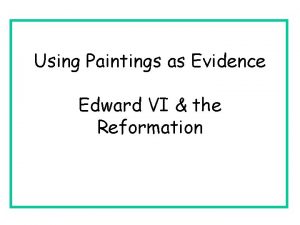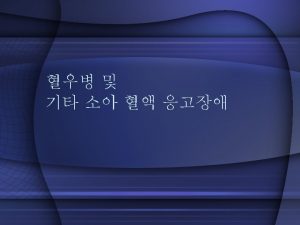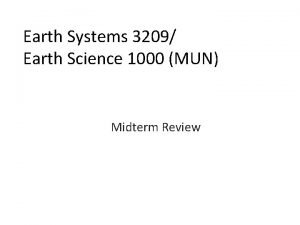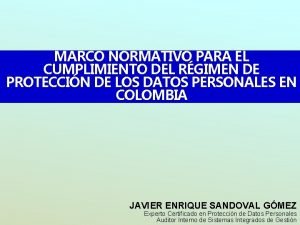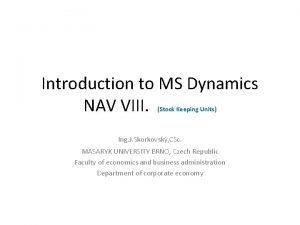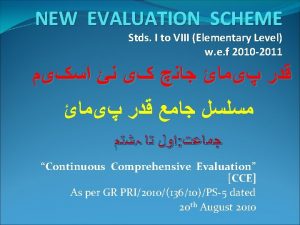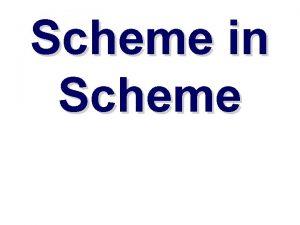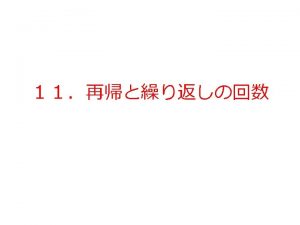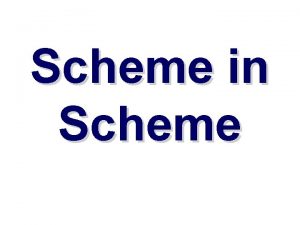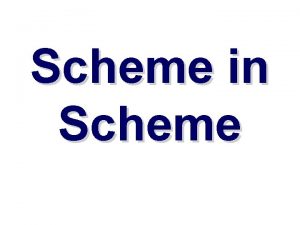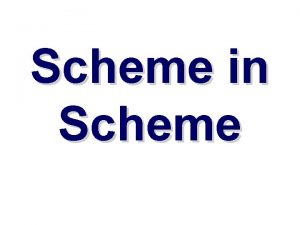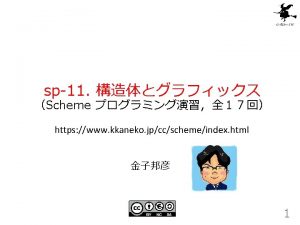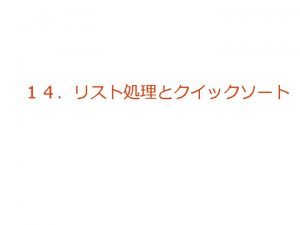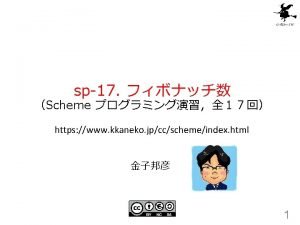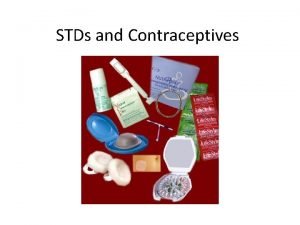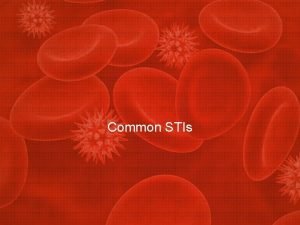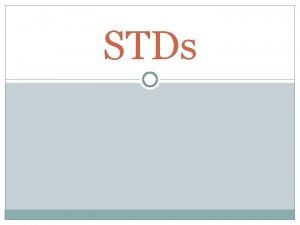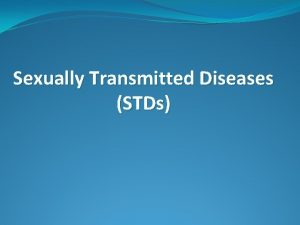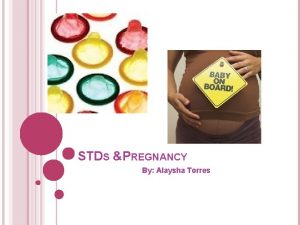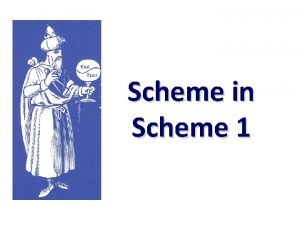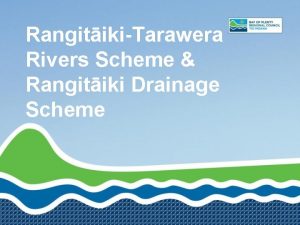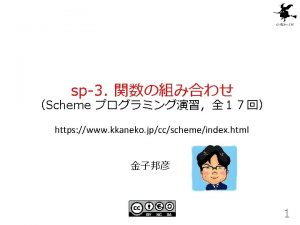NEW EVALUATION SCHEME Stds I to VIII Elementary



























































- Slides: 59

NEW EVALUATION SCHEME Stds. I to VIII (Elementary Level) w. e. f 2010 -2011 “Continuous Comprehensive Evaluation” [CCE] As per GR PRI/2010/(136/10)/PS-5 dated 20 th August 2010

THE BACKGROUND: Ø The Kothari Commission Report 1966 had stated that “the internal assessment or evaluation conducted by schools is of greater significance and should be given increasing importance. It should be comprehensive, evaluating all those aspects of students’ growth that are measured by the external examination and also those personality traits, interest & attitudes which cannot be assessed by it”. (9. 84)

THE BACKGROUND: Ø National Policy on Education 1986 had also stated that ‘continuous and comprehensive Evaluation should incorporate both scholastic and non-scholastic aspects of evaluation spread over the total span of instructional time (8. 24(iii))

THE BACKGROUND: Ø The National Curriculum Framework- 2005 (NCF -05) also proposed examination reforms. Its position paper on Aims of Education – NCF 2005, NCERT says: School based CCE system should be established to… Reduce stress on children Make evaluation comprehensive and regular Provide space for the teacher for creative teaching Provide a tool of diagnosis & remediation Produce learners with greater skills

Right to Education Act RTE - 2009 On 27 th August 2009, Govt of India adopted a new act “right to free and compulsory education for children between 6 -14 years of age”. This law came into force for the entire country (except Kashmir) w. e. f 1 st April 2010 It states that students up to std. VIII should not be made to appear for any board examination From the year 2010 -2011, a scheme of continuous comprehensive evaluation to be implemented from Std. I to VIII

Continuous Comprehensive Evaluation (CCE) CCE refers to a system of school based evaluation of students that covers all aspects of student personality. It is a curricular initiative, attempting to shift emphasis from mere testing to Holistic Learning. ‘Continuous’ means that the evaluation of identified aspects of students’ growth and development is a continuous process rather than an event. It is built into the total teaching learning process & spread over the entire academic session. ‘Comprehensive’ mean the scheme attempts to cover both the scholastic and the co-scholastic aspects of students’ growth and development.

OBJECTIVES OF CCE: CORE OBJECTIVE: Continuity in evaluation & assessment of Broad based learning & behavioural outcomes To help develop skills (Cognitive, Psychomotor & affective) To lay emphasis of thought process & de-emphasize memorization To make evaluation an integral part of teaching learning process To use evaluation for improvement of students’ achievements To guide teaching learning strategy on the basis of regular diagnosis followed by remedial instructions To make the process of teaching & learning a ‘Learner Centred Activity’

BENEFITS OF CCE Elimination of chance & subjectivity De-emphasis of memorization Encouragement of comprehensive evaluation covering scholastic and co-scholastic aspects Continuous evaluation spread over the total span of the instructional time Functional & meaningful declaration of results for effective use by all Wider use of test results for improvement through diagnosis & remedial/enrichment programme Improvement in the mechanics of conducting examination Introduction of desired changes in instructional material & methodology Use of grade in place of marks in determining the level of pupils’ performance and proficiency

WHAT IS EVALUATION? It is the systematic collecting, analyzing and reporting of information about a students’ knowledge, attitudes, skills, intentions and/or behaviours regarding specific content, issues or experiences. There are two kinds of evaluation Ø Formative Evaluation Ø Summative Evaluation

FORMATIVE EVALUATION Definition: Evaluation taken at varying interval throughout a course to provide information and feedback that will help improve the quality of student learning and the quality of the course itself. Goal: To monitor student learning to provide ongoing feedback that can be used by instructors to improve their teaching and by students to improve their learning. Example: Asking students to submit 1 or 2 sentences identifying the main point of a lecture.

CONTINUOUS COMPREHENSIVE EVALUATION In order to achieve the core objectives of education, Formative Evaluation should aim at developing: LIFE SKILLS CORE COMPONENTS OF NPE VALUES -1986 Self-awareness India’s Freedom Movement Punctuality Empathy The constitutional obligations Neatness Problem solving Nurturing national identity Dignity of labour Decision Making India’s common cultural heritage Gender Equality Effective Communication Equality, democracy & Secularism Scientific Attitude Interpersonal relations Gender Equality National Integration Creative thinking Protection of the environment patriotism Critical thinking Removal of Social Barriers Sensitivity Coping with emotions Small family norms Religious Tolerance Coping with stress Scientific Temper Courtesy

SUMMATIVE EVALUATION Definition: Evaluation taken by students at the end of a unit or semester to demonstrate the ‘sum’ of what they have and have not learned. Goal: To evaluate student learning at the end of an instructional unit by comparing it against some standard or benchmark. Example: Assigning marks or a grade to a final exam.

ØSUMMATIVE EVALUATION OBJECTIVES: 1 ) To summarize the growth in the student’s personality from the information gathered at different stages during the academic year. 2 ) To check whether the progress observed during the formative evaluation is retained or not. 3 ) To decide and change the plan of teaching learning process by retrospection of the personality development.

DIFFERENCE BETWEEN FORMATIVE AND SUMMATIVE EVALUATION INDICATORS Goal FORMATIVE The goal of formative assessment is to improve SUMMATIVE The goal of summative assessment is to prove Purpose To enhance learning Relation to instruction Frequency Occurs during instruction To make judgements about students’ performance Occurs after instruction Role To improve learning allows teachers to make decisions and monitor their instructions based on students’ performance Occurs on a continuous basis (daily) Occurs at a particular point of time to determine what students know To predict & judge students’ performance, give grades and determine if the content being taught was retained

DIFFERENCE BETWEEN FORMATIVE AND SUMMATIVE EVALUATION INDICATOR S Role of students Examples FORMATIVE SUMMATIVE Active involvement Passive Involvement Observations, interviews, evidence from work samples, etc Common assessments like tests and exams Designed to adjust teaching and learning while they are still occurring Means of testing Quiz, interviews, conversations, visual and oral testing, projects, practicals and assignments, etc. Done to improve or change a program while it is in progress Designed to provide information about the amount of learning that has occurred at a particular time Assessment in the form of pen-paper test mostly Evaluation Grading Scored but not graded Focuses on the results or outcomes of a program Graded

NEW EVALUATION SYSTEM (w. e. f. 2010 -2011) 1 st SEMESTER June Formative Evaluation(A) ( Using minimum 5 out of 8 Evaluation tools suggested) October Term End Result Summative Evaluation(B) = A + B = 100 Converted into Grades

NEW EVALUATION SYSTEM (w. e. f. 2010 -2011) 2 nd SEMESTER November Formative Evaluation(A) ( Using minimum 5 out of 8 Evaluation tools suggested) April Term End Summative Evaluation(B) Result = A + B = 100 Converted into Grades

CONTINUOUS COMPREHENSIVE EVALUATION Stds. I to VIII (A) Languages/Maths/EVS/Gen Science/ Soc. Science Proforma - 1 FIRST/SECOND SEMESTER Formative Evaluation (A) Day to day Observation, Oral work, Practical/Experiment, Activity, Project, Test/Open book, Home/class work, Others Class I & II III & IV 20 10 30 10 40 10 50 10 100 40 50 VII & VIII Oral/Practical 60 Grand Total (A+B) Theory 70 V & VI Summative Evaluation (B) 100 (B) Art & Craft, Work Experience & Physical Education and Health FIRST/SECOND SEMESTER Formative Evaluation Summative Evaluation Day to day Observation, Oral work, Practical/Experiments, Activities, Project, Test/Open book, Home/class work, Others Class I to VIII 100 Grand Total 0 100

TOOLS OF EVALUATION (for Formative Evaluation) Day-to-day observation Oral work(Question answer, loud reading, dialogues/conversation, role-play, interview, group discussion, etc. ) Practical/Experiments Activity(Individual, Group, Self-Study) Projects Tests(Informal small duration written tests, open book tests, etc. ) Homework/Class work(Informative, descriptive, essay, report, story, letter, dialogue, expressing imagination, etc) Others(Questionnaire, self-evaluation, peer-evaluation, group work & other similar tools)

CONTINUOUS COMPREHENSIVE EVALUATION Instructions formative evaluation Use minimum five tools per subjects in each semester for academic subjects and minimum three tools for Arts, Work Exp. & Phy. Edu. The usage of tools should be spaced throughout the semester The selection and weightage of each tool will depend upon the needs of the child and the objectives of the topic & subject At least one project work should be conducted in an academic year in any subject At least one unit test(short duration) per semester should be organized in each subject

Daily Observation Main Objective: To monitor the progress and not just maintain the record No target set for the no. of observations Record observations based on the responses during teaching-learning process Material prepared by unauthorized/external sources cannot be used Note matters of special importance, level of achievement and nature of difficulties Observation should be based on responses related to life skills, core components and values Separate recording of observations per tool is not expected Do not write the observations during the teaching-learning process Subject teachers should maintain a separate notebook for recording from time to time Use the record for allotting marks out of 5 or 10 at the end of the semesters

Oral Work Students should be given sufficient practice in oral work Give due consideration to the subject and its content Use question-answers, loud reading, conversation, role-play, interview, group discussion, etc. Use any one or two of the above methods for the evaluation Select topics of similar difficulty level Mark and evaluate during the semester

Practical/Experiment Conduct practical/experiment based on subject & content List the practical/experiment taking objectives & the content of the subject into account Prepare a schedule of conducting practical/experiment Decide practical/experiment to be conducted for individual or in groups Plan practical/experiment depending upon the time & equipments available Observe the performance of the student Record the noteworthy points & write the descriptive remarks

Action/Activity Prepare a list of activities based on class-wise, subjectwise objectives & content of the topic Plan the activities considering – Short/Long Duration Activities Individual/Group/Class Activities Time Available Select activities related to environment, day-to-day work & life in general Support/Guide students during long duration activities Note any extraordinary effort/achievement

Project Prepare list of projects based on class-wise, subject-wise objectives, age group, environment, capacity & interest of students At least one project per student during a year is expected The duration of the project should be the entire 1 st/2 nd semester It is possible to give the same project to the entire class in one subject Selection of the projects for each class should be done collectively by the Principal, class-teacher, subject-teacher and the student Subject-teacher should help the student select a topic for project Subject teacher should also guide & monitor the progress & extra ordinary achievement during the project Supervise all the four stages of the project; compiling, analyzing, conclusion, presentation & statement of the project Ensure that students themselves do the project work

Short Duration Written Tests Based on class/subject-wise objectives, select the content of the test Form/nature of the questions should be … Based on knowledge, understanding, application & skills Open-ended questions Questions testing the analytical, synthesizing & evaluating skills Questions testing thoughts related to core components, life skills & values Avoid questions based on memory Prepare question banks in each subject based on the above criteria Use the same questions for home assignment, class work & practice tests Conduct a short duration test of 5 -15 marks in each term in an informal setting It is mandatory to use the question paper set by the concerned teacher only Allow extra time if required by the students Show assessed paper and discuss/guide/correct the mistakes

OPEN BOOK TEST Select any unit from text or similar content from other source, appropriate to the age group Difficulty level of the questions should be higher Questions requiring understanding of the concept rather than just copying from the book Question to be based on application in day-to-day life Enough practice to be given before the actual test Guide students based on the difficulties faced by them

Home/Class work Prepare list of class/home-work based on the objective of the subject & unit Decide the no. of class/homework sufficient for practice & application Student should be able to do the assignment on their own Avoid too many questions and lengthy answers Selected class/homework should be assessed, marked and calculate average as per the weightage assigned Variety in test questions is expected. Use the same questions for class/homework for practice Assess class/homework from time to time and provide guidance/assistance to students Use guidelines given on Pages 37, 38 & 39 in teacher’s

Others Teachers have the freedom to use one/two of the suggested tools or devise their own “Group-work” is one of the most useful alternative suggested Group work facilitates peer learning Students discuss the given unit and learn through the process The teacher should monitor/guide & resolve the difficulties Self-study cards prepared by the “Maharashtra Shikshan Parishad” for Std. I to IV can be useful For self/peer evaluation tools, teacher should prepare questionnaire & administer for the process of evaluation These tools can help identify the personality traits like sharingcaring, cooperation, etc. Assessment from peers should be shared & discussed

CONTINUOUS COMPREHENSIVE EVALUATION WEIGHTAGE OF FORMATIVE EVALUATION Proforma -2. 1

CONTINUOUS COMPREHENSIVE EVALUATION WEIGHTAGE OF FORMATIVE EVALUATION Proforma – 2. 2

CONTINUOUS COMPREHENSIVE EVALUATION Instructions for summative evaluation It should be done in the form of written, oral and practical at the end of each term Oral/Practical examination should be conducted at the class/school level, jointly by the teacher and the Head All academic subjects except work experience , art and physical education Evaluation should be done at class level only. Question papers prepared by any external agencies should not be used For non – English schools, English subject in Std. I and II is to be evaluated through orals and practicals only. There should be flexibility in duration of evaluation

SUMMATIVE EVALUATION QUESTION PAPER 1 ) Question paper should be prepared at the class level. 2 ) Do not use Question papers prepared by external agencies. 3 ) Each teacher should prepare own set of different types of questions. 4 ) Each school should prepare question banks for each class and each subject to be used for practice / revision and evaluation. 5 ) There should be flexibility in duration of evaluation

SUMMATIVE EVALUATION EXPECTATIONS FOR QUESTIONS 1 ) Use open-ended questions as far as possible. 2 ) Questions which demand creative responses. 3 ) Prepare questions based on variety of objectives like knowledge, application, understanding, skill, interest, appreciation, etc. 4 ) Questions based on rote learning and mechanical reply should not be encouraged

GRADING SYSTEM The progress report of the child should be given to the parent at the end of each semester The marks obtained in formative & summative evaluation in each semester should be added and then converted into grade as per the key provided Classification of Marks GRADE 91% to 100% 81% to 90% 71% to 80% 61% to 70% 51% to 60% 41% to 50% 33% to 40% 21% to 32% 20% & below A 1 A 2 B 1 B 2 C 1 C 2 D E 1 E 2 Remarks in report cards should be descriptive and positive in nature. It should mention the good qualities of the child. It should encourage and not compare a child with any one.

RE-EVALUATION & EXTRA SUPPLEMENTARY GUIDANCE Re-evaluation should be conducted for those who remain absent during the evaluation Teachers should aim at helping the child to obtain minimum C 2 grade It will be compulsory for a teacher & school to provide extra guidance & coaching to children who score grade D or below, and help them attain minimum C 2 grade Under any circumstances, no child should be detained in the same class Extra supplementary guidance – Students lagging behind in achieving the objectives should be provided with extra supporting guidance from time to time in case of formative evaluation and after the summative evaluation at the end of each term also

STRATEGIES FOR EXTRA SUPPLEMENTARY GUIDANCE Prepare a checklist of weaknesses and shortfalls Identify and find reasons for the same Use group work method/learning Make teams/groups for similar deficiencies No ability tracking Design strategies for each group Create interest using innovative teaching aids Give separate incentives for attendance & performance Find talents in other areas Give opportunity to show/display Encourage, give importance, respect Apply action/activity based teaching

STRATEGIES FOR EXTRA SUPPLEMENTARY GUIDANCE Use selective studies/separate syllabus Evaluate on the same criteria Share student oriented case studies/success stories Use formative evaluation correctly Find out-of-the-box solution Use full instructional time Plan as per the need of each class/subject Alter timetable as per the need Use one hour per week for supervised study Prepare subject-wise daily timetable Experiment with different procedures Convince teachers to show sympathy, patience and understanding Do not use the word ‘remedial’

CONTINUOUS COMPREHENSIVE EVALUATION Proforma - 3 YEARLY PLANNING OF SYLLABUS AND EVALUATION (2011 -2012) Class: _____ Subject: _______ Teacher: ________ Objectives of the Topic / Learning outcomes Values / core Month/ Evaluation Topic (No. Teaching component / After the Working tools & & Name) Aids Life skills completion of this Days weightage topic, the child should be able to ………. Objectives of the subject

CONTINUOUS COMPREHENSIVE EVALUATION Proforma - 4

CONTINUOUS COMPREHENSIVE EVALUATION Proforma - 5

CONTINUOUS COMPREHENSIVE EVALUATION Proforma - 6

CONTINUOUS COMPREHENSIVE EVALUATION WEIGHTAGE FOR QUESTION TYPES IN SUMMATIVE EVALUATION Class Theory+or als/pract. Subjects Weightage of Question types for theory I & II 20+10 Languages, Maths, E. V. S 70% Objective(14 marks) + 30% Short Answer(6 marks) 30+10 Languages, Maths, E. V. S, 40 % Objective(12 marks) + 50 % Short Soc. Science answer(15 marks) + 10% Long answers(3 marks) III & IV V & VI VII & VIII 40+10 Languages, Maths, Gen. Sc. , Soc. Science 20 % Objective(8 marks) + 60 % Short answer (24 marks)+ 20 % Long answer(8 marks) 50+10 Languages, Maths, Gen. Sc. , Soc. Science 20 % Objective(10 marks) + 60 % Short answer(30 marks) + 20 % Long answer(10 marks)

CONTINUOUS COMPREHENSIVE EVALUATION SUBJECT-WISE DESCRIPTIVE REMARKS FIRST/SECOND SEMESTER Student's name: ___________ Std: _____ Div: _____ Subject 1 2 3 4 5 6 7 8 Descriptive Remarks

CONTINUOUS COMPREHENSIVE EVALUATION Instructions for Descriptive Remarks: Student’s progress is to be noted and recorded in each subject in both the semesters separately. Use at least two pages in each subject for each semester While noting the progress in a particular subject, keep in mind the tools and techniques used. Record the student’s noteworthy progress, learning shortfalls and difficulties Praise and mention the remarkable progress made by the student. Help the student overcome the difficulties and learning shortfalls by compiling and analysing the remarks and using extra supplementary guidance like joint guidance, group-work, individual guidance, assignments, revision, etc.

Some positive descriptive remarks You can write lengthy answers well. This is a good thing. Everyone should do that. Look everyone, Shamika’s notebook is so neat and tidy. There are no cancellations. I like your drawing. Draw 3 -4 pictures. We will display it on the class board. The poem which you recited has a very different tune. It is melodious to hear. Your voice is loud and clear. Everyone should take the morning pledge in the assembly like you. See how fine and similar, Meenakshi’s rangoli lines are. Make such fine lines. You can also do it. Let’s all clap and praise Meena

Some positive descriptive remarks Your handwriting is good. Only while writing joint words, take a few precautions, then you will have no problems. Your diagrams are correct, if your lines appear thick. Sharpen your pencil, then your diagram will be perfect. I have seen all the examples of addition that you have solved. Now you observe and tell me where you have made mistakes. We have learnt that we have to write unit place below unit and ten below ten. Use this method and then solve the sum again. It will be correct. Once you learn how to add, multiplication will be easy for you.

CONTINUOUS COMPREHENSIVE EVALUATION Proforma – 7. 1

CONTINUOUS COMPREHENSIVE EVALUATION Proforma – 7. 2

CONTINUOUS COMPREHENSIVE EVALUATION Proforma – 7. 3

CONTINUOUS COMPREHENSIVE EVALUATION Proforma – 7. 4

CONTINUOUS COMPREHENSIVE EVALUATION

CONTINUOUS COMPREHENSIVE EVALUATION SUCCESS OF CCE => ROLE OF ALL STAKEHOLDERS… (Principals, Parents, Teachers & Students) Positive attitude & open-mindedness Willingness to adapt to new changes Complete knowledge & understanding of the system Regular interaction and coordination Mutual trust & respect Fair & just approach Responsible behaviour Being conscious & alert Clarity in communication Creativity & innovation Proper training & orientation Shift from subjectivity to objectivity

CHALLENGES OF CCE Large class strength High Pupil / Teacher ratio Teachers perception and competencies Absenteeism (Teacher / Pupil) Diversity of learners Time constraints Monitoring and feedback Remediation and enrichment Teaching-learning resources Uniform applicability Preventing nepotism and victimization Switching from CCE to traditional evaluation in higher class

Open & Closed Ended Questions A closed ended question(CEQ) can be answered with either a single word or a short phrase. An open ended question(OEQ) is likely to receive a long or multiple answers. Characteristics : *CEQ give us facts , are easy & quick to answer, & keep control of the conversation. *OEQ ask respondent to think & reflect, give opinions & feelings, & take control of the conversation.

Features of Open Ended Questions No fixed method No fixed answer/Many possible answers Solved in different ways & on different levels Offer student room for own decision making & natural mathematical way of thinking Develop reasoning & communication skills Open to student’s creativity & imagination Focuses on student’s understanding & ability to reason & apply knowledge

CEQ Vs OEQ Do you get on well with your boss? Who will you vote for in this election? 6 + = 10 Solve: 2 x + 4 = 8 What is the capital of Maharashtra State? Tell me about your relation with your boss. What do you think about the 2 candidates in the election? + = 10 Ali solved 2 x + 4 = 8 & got 2, Susan solved the eq. & got 6. Who is correct & why? ?

CEQ vs OEQ Does your teacher like you? 5 7 Find area of the rectangle. 15 ÷ =5 Which equipment is used to put out fire? What are the constituents of a balanced diet? What qualities your teacher appreciate in you? Find the length & breadth of the teacher’s table & blackboard. Calculate & compare their areas. ÷ =7 What will you do if a sudden fire breaks out? Prepare a food chart of your family for a week. Write its constituents & find if it is a balanced diet or not.

If the child is not Learning the way you are teaching , try teaching the way the child Learns. Thank You Prepared by: NAJMA KAZI Email: najmakazi@gmail. com Phone: 98210 48016 www. slideshare. net Search for “CCE Presentation”
 What stds are curable
What stds are curable Chapter 24 lesson 2 preventing and treating stds
Chapter 24 lesson 2 preventing and treating stds Std incubation period
Std incubation period Genitourinary & stds
Genitourinary & stds Stds in women
Stds in women Cervicitis slideshare
Cervicitis slideshare Hepatitis cureable
Hepatitis cureable Chlamydia curable
Chlamydia curable 3 domain scheme and 5 kingdom scheme
3 domain scheme and 5 kingdom scheme Scheme stata
Scheme stata Pyramid scheme vs ponzi
Pyramid scheme vs ponzi Rhyming scheme of an elementary school classroom in a slum
Rhyming scheme of an elementary school classroom in a slum Dr. aigner zoltán
Dr. aigner zoltán Kegunaan xenon
Kegunaan xenon Henry viii family tree
Henry viii family tree Nervio vago
Nervio vago Henry viii beheaded wives
Henry viii beheaded wives French monarch family tree
French monarch family tree Mapa mental formação dos estados nacionais
Mapa mental formação dos estados nacionais So4 lr6
So4 lr6 The teacher and the higher authorities in the philippines
The teacher and the higher authorities in the philippines Reforma luterana consequências
Reforma luterana consequências Henry viii great matter
Henry viii great matter Tudor banquet menu
Tudor banquet menu Grupo viii a de la tabla periodica
Grupo viii a de la tabla periodica Domingo 8 tiempo ordinario ciclo c
Domingo 8 tiempo ordinario ciclo c Lecturas domingo xviii tiempo ordinario ciclo c
Lecturas domingo xviii tiempo ordinario ciclo c Gutenberg printing press ap world history
Gutenberg printing press ap world history Roma siglo viii a.c
Roma siglo viii a.c Viii encuentro nacional de catalogadores
Viii encuentro nacional de catalogadores Crus cerebri
Crus cerebri Renaisans merkantilisme dan reformasi gereja di eropa
Renaisans merkantilisme dan reformasi gereja di eropa Csric viii
Csric viii When did henry divorce catherine of aragon
When did henry divorce catherine of aragon The six wives of henry viii
The six wives of henry viii Cn viii
Cn viii Pregatire suplimentara limba romana evaluare nationala
Pregatire suplimentara limba romana evaluare nationala Cn viii
Cn viii Faustino viii
Faustino viii Canto 7 inferno parafrasi
Canto 7 inferno parafrasi Cn viii
Cn viii King henry viii gardena
King henry viii gardena Prvky viii.a skupiny
Prvky viii.a skupiny Viii henrik feleségei
Viii henrik feleségei Henry viii deathbed painting
Henry viii deathbed painting San faustino 2020
San faustino 2020 Luther calvin and henry viii
Luther calvin and henry viii Rome numbers
Rome numbers John calvin and henry viii
John calvin and henry viii Henryk viii
Henryk viii Jnc viii
Jnc viii Viii
Viii Henry viii great matter
Henry viii great matter Henry viii foreign policy 1509-1529
Henry viii foreign policy 1509-1529 Reflexões do poeta canto viii
Reflexões do poeta canto viii Mun earth science
Mun earth science How to remember henry viii wives
How to remember henry viii wives Circular unica sic titulo viii
Circular unica sic titulo viii Nav viii
Nav viii Distress message format
Distress message format
